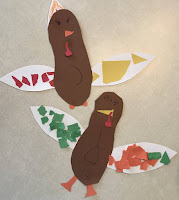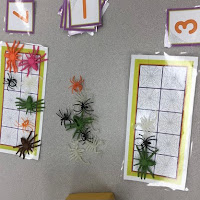There are so many great, diverse books for children that can be introduced into your home or classroom library, enhancing your selection, making it more multi-cultural and more equitable. By showing characters of all races, creeds, and family and home situations, you are including all in your home or classroom, and making sure that your children are seeing that the world is full of wonderful diversity. Showing characters with physical challenges, or including characters who might have unseen differences, opens up great conversations and normalizes varied situations.
A short list of favorites doesn't even begin to touch on some fabulous new and old titles. Use this as a jumping off point, but keep adding to your own list - it's so important!
Some books to look for ....
The Day You Begin by Jacqueline Woodson (2018)
This book doesn’t leave you at how people are different but rather reminds us that when we reach out and take the first steps, people meet us half way.
This Is How We Do It by Matt Lamothe (2017)
One day in the lives of seven kids from Iran, Russia, Peru, India, Japan, Uganda, and Italy. Highlights differences and sameness about their schools, homes, dress, food, play, etc.
La Princesa and the Pea by Susan Middleton Elya (2017)
This is a great retelling of the familiar fairy tale, with up to date illustrations by Juana Martinez-Neal. Check out the glossary of Spanish terms up front before reading. So great for native Spanish speakers to celebrate their native tongue. Look for other books of this type - familiar stories with different languages and cultures featured.
Jabari Jumps by Gaia Cornwall (2017)
This beautiful, simple book is very relatable for all children – the main character is working up courage to jump off the diving board. Looking for books that show characters of all colors helps students see themselves in books.
The Bad Seed by Jory John (2017)
The cool, graphic illustrations show the Bad Seed (the "bad" kid) and how it got to be bad … you will start to feel sorry for the bad one and root for it to go good. Shows a kid version of trauma, and trying to find good in what can sometimes be a tough world … the right book for a certain situation. Great for helping students develop empathy.
The Diwali Gift by Shweta Chopra and Shuchi Mehta (2015)
The characters get a gift from one’s grandmother, Dadima, to celebrate the Hindu Festival of Lights, Diwali. Explains some traditions of a Diwali celebration – may help some students make connections to their holiday, which may not be a holiday all know about. Definitely read the glossary in the back for definitions first.
All Are Welcome by Alexandra Penfold and Suzanne Kaufman (2018)
This story is told in its pictures and has to be looked at closer than just the words on the page. Pictures depict children of all races, religions, etc. working and playing together in a school environment.
Whoever You Are by Mem Fox (1997)
This is a sweet, classic book which celebrates the similarities among people, instead of differences.
The Sneetches by Dr. Seuss (1961)
This book has an important message for any/all marginalized groups.
The Family Book by Todd Parr (2003)
All kinds of family groups are shown in this inclusive book. This books shows us that no matter what size or shape your family is, it is a great family for you.
The Paperbag Princess by Robert Munsch (1992)
The Princess saves the prince and then figures out she’s better alone - flips the gender stereotype.
Do this important work to celebrate diversity!
And, as always, have fun doing it!















































